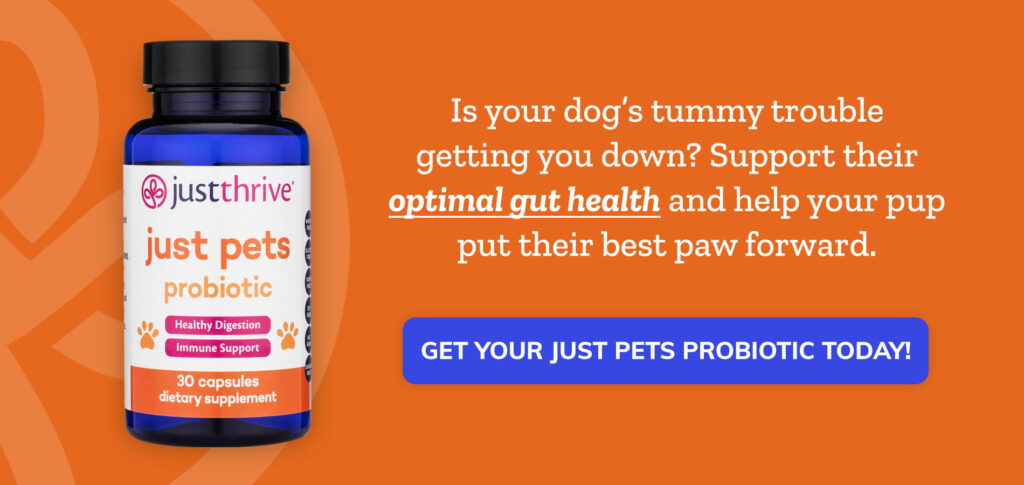Last year’s New Year’s resolution was to make a positive change in your diet – eat more greens, less dairy and a lot less sugar. You’ve stuck to it and you look and feel great. Good job!
This year, you decided to make some changes for your pets. You’ve been getting a bad feeling about the kibble you’re feeding your dogs ever since you made changes in your own diet. Kibble seems to be the gold standard with everyone you know – including your vet – but you can’t wrap your head around the idea that those crunchy little bits are providing all the nutrition your dogs need. Your vet advises against home cooking, because you might miss an important nutrient or feed the wrong thing … so, you really don’t know where to begin.
It’s a story I’ve heard many times, and one I experienced myself. Considering I’m not much of a cook, the idea of preparing a meal for my dog and cat from scratch was quite terrifying. What if I fed something completely wrong and killed them? Or I missed something important that would lead to long-term illness? Would they even eat it?
At about nine months, my dog started suffering from allergies, which sent me on a research mission to find out what I could do. Always on the top of any list to improve your pet’s health is diet. So, I began my search for the right food and this is what I found:
Kibble: At the bottom of the quality scale for dog and cat food is kibble. You might be wondering how that’s even possible, since that’s what everyone you know feeds their dogs. Your vet sells it and your pet store has a ton of very expensive brands that are supposed to provide complete nutrition for dogs and cats. The sad truth is that kibble is basically the pet version of fast food. It is cooked at very high temperatures and is incredibly processed, which essentially kills any nutrients it may have. And at the very cheap level of kibble, it can contain some extremely low-quality ingredients. Plus, there are preservatives and chemicals added to kibble to keep it looking pretty and to give it a long shelf life.
Canned: Slightly higher on the quality scale, but not exactly great either, is canned food. Though canned food is not fresh when you feed it, it is less processed than kibble. That’s why it requires refrigeration once opened. It can still contain plenty of unwanted chemicals, but it is an improvement over kibble.
Freeze Dried and Dehydrated: Freeze dried pet food is processed and preserved by freezing while dehydrated foods use heat – though much less than what’s used for kibble. These foods are usually reconstituted with water and typically come out looking something like porridge. Some dogs and cats take to them quite readily and some less so. They typically don’t contain chemical preservatives because the act of freeze drying and dehydrating is the preservative. Many of the better brands try to use organics and high quality meats to mimic a quality fresh food diet as much as possible. A drawback can be the price, especially if you have a large dog.
Frozen Pre-made: These are raw, ground diets of meat, organ and bone, with or without veggies, that are frozen. Some brands boast free-range, hormone and antibiotic-free meats and organic vegetables. On the quality scale, you’ve definitely moved up several notches if you’re feeding these foods, though quality can vary from brand to brand, of course. Prices can vary greatly depending on the type of meat the food is made with and the brand. There are some affordable options and there are also extremely expensive options. One drawback is you need a lot of freezer space if you feed a lot of it.
Fresh: When you think about it, it makes sense right? What are humans supposed to eat? Fresh, whole foods. It’s not so different for our pets. If you’re feeding something from this category, it means you are feeding either cooked food made from whole, fresh food ingredients you yourself would eat or you are feeding whole, fresh foods that include raw meats, organs, bones and veggies. Wow. Things just got scary, didn’t they? I know it can be hard to take in at first. You don’t know what’s worse, the raw part or the bone part. Or the part where you have to figure out what to feed your pet without anybody packaging it for you in a bag. It can all be a bit of a learning process, and nobody says you have to do it overnight. What you need to know is this: People feed themselves and their kids every day and though there’s usually room for improvement, most people survive their daily meals just fine. And though the nutritional requirements for dogs and cats are a little different than for humans – which is why they can eat raw meat and raw bone (never cooked because that’s when it splinters) – they’re not from another planet, they can eat a lot like us.
There’s tons of information out there and if you’re just starting to look into changing your pet’s diet, things can get overwhelming. So, here are a few sites and links that I’ve consulted myself in my ongoing search to feed my pets the best way I can:
http://www.dogsnaturallymagazine.com/dog-food-ten-scary-truths/
http://www.thewholedog.org/artkibble.html
http://www.thehonestkitchen.com/why-choose-dehydrated-pet-food
http://healthypets.mercola.com/sites/healthypets/archive/2010/07/21/13-pet-foods-ranked-from-great-to-disastrous.aspx
http://products.mercola.com/healthypets/real-food-for-healthy-dogs-and-cats-cookbook/
http://www.dogsnaturallymagazine.com/raw-feeding-primer/
http://leerburg.com/feedingarawdiet.htm

